Just Overheard My Wife Spelling Something On The Phone And I Shit You Not Saying The Words “E As In
just overheard my wife spelling something on the phone and i shit you not saying the words “E as in Eeyore” i am on my hands and knees wailing screaming crying pleading and begging people to learn the NATO phonetic alphabet

More Posts from Quandrixing and Others









technology cc finds (mix of retro and modern)
✧ laptop | radio | cd player
✧ tiny tunes speaker | standing ipad | vcr and tape
✧ super nintendo | ipad | phone with earplugs
· · ─────── ·𖥸· ─────── · ·
This might be Derek Guy's greatest masterpiece.
(The Twitter thread is probably easier to read and easier to look at the images, but I wanted to make sure it got preserved. Images are the tweets.)










(Continued in reblog)
Get Rid of Google Workspace
Have you switched to Firefox and/or Duck Duck Go and are ready to give everything in Google Workspace the boot? Here's an easy and quick way from someone who just downloaded all their files.
Sign in to Google Drive.
On the top you'll see the search bar with a search filter symbol. Click it.

3. Select what type of file you want to download.

4. Scroll down to the bottom of the list of files and hit ctrl + a. That will select all the files and you'll see how many you have at the bottom left corner.

5. Go back up to the top of the page and hit the download symbol.

6. Sit back while your files are zipped and downloaded!
I had years of work and hundreds of files and it took me all of 10 minutes to snag them all. I'm now ready to delete everything from Google Drive and live a life free of the evil, all-seeing eye having access to my stuff.
Show, don’t tell
"Show, don’t tell" means letting readers experience a story through actions, senses, and dialogue instead of outright explaining things. Here are some practical tips to achieve that:
1. Use Sensory Details
Tell: "The room was cold."
Show: "Her breath puffed in faint clouds, and she shivered as frost clung to the edges of the window."
Tell: "He was scared."
Show: "His hands trembled, and his heart thudded so loudly he was sure they could hear it too."
2. Focus on Actions
Tell: "She was angry."
Show: "She slammed the mug onto the counter, coffee sloshing over the rim as her jaw clenched."
Tell: "He was exhausted."
Show: "He stumbled through the door, collapsing onto the couch without even bothering to remove his shoes."
3. Use Dialogue
What characters say and how they say it can reveal their emotions, intentions, or traits.
Tell: "She was worried about the storm."
Show: "Do you think it'll reach us?" she asked, her voice tight, her fingers twisting the hem of her shirt.
4. Show Internal Conflict Through Thoughts or Reactions
Tell: "He was jealous of his friend."
Show: "As his friend held up the trophy, he forced a smile, swallowing the bitter lump rising in his throat."
5. Describe the Environment to Reflect Mood
Use the setting to mirror or hint at emotions or themes.
Tell: "The town was eerie."
Show: "Empty streets stretched into the mist, and the only sound was the faint creak of a weathered sign swinging in the wind."
6. Let Readers Infer Through Context
Give enough clues for the reader to piece things together without spelling it out.
Tell: "The man was a thief."
Show: "He moved through the crowd, fingers brushing pockets, his hand darting away with a glint of gold."
7. Use Subtext in Interactions
What’s left unsaid can reveal as much as what’s spoken.
Tell: "They were uncomfortable around each other."
Show: "He avoided her eyes, pretending to study the painting on the wall. She smoothed her dress for the third time, her fingers fumbling with the hem."
8. Compare to Relatable Experiences
Use metaphors, similes, or comparisons to make an emotion or situation vivid.
Tell: "The mountain was huge."
Show: "The mountain loomed above them, its peak disappearing into the clouds, as if it pierced the heavens."
Practice Example:
Tell: "The village had been destroyed by the fire."
Show: "Charred beams jutted from the rubble like broken ribs, the acrid smell of ash lingering in the air. A child's shoe lay half-buried in the soot, its leather curled from the heat."
i think i’ve said it before but ✨✨𝓵𝓲𝓰𝓱𝓽𝓲𝓷𝓰✨✨ progress vid for the adoption comic! tip link in source <3
You know what, since I'm thinking about it anyways, let's talk formalwear accessories. Most of these are traditionally menswear but a bit of gender fuckery is good for the soul, and frankly most of these are about making your mass-produced clothing fit and lay properly without having to go to the tailor.
Shirt stays: these go around your thighs to hold your shirt down, so that it stays smooth and tucked in. They're usually elastic, with 1-3 clips, and if you wear skirts frequently this is a GREAT way to make sure your top doesn't ride up. The clips will be visible if you're wearing something tight, so loose pants or skirts are where these do best. There's also an insane version that clips to your socks, but that is for lunatics. If you wanted, you could also use one of these clips to hold up thigh-highs.
These do a great job of smoothing and narrowing the waist area by keeping your shirt from bunching there.


Sleeve garters: usually metal, leather, elastic, or silk. These are usually worn with button-down shirts to adjust where your cuff falls on the wrist or hand. They're properly worn on the upper arm, and you pull the fabric of the sleeve above the garter until you cuff is where you want it. Because this creates a puff of sleeve at the bicep, it also broadens the appearance of the shoulders. It's great if you're working with your hands or if your sleeves are often too long for your preference.
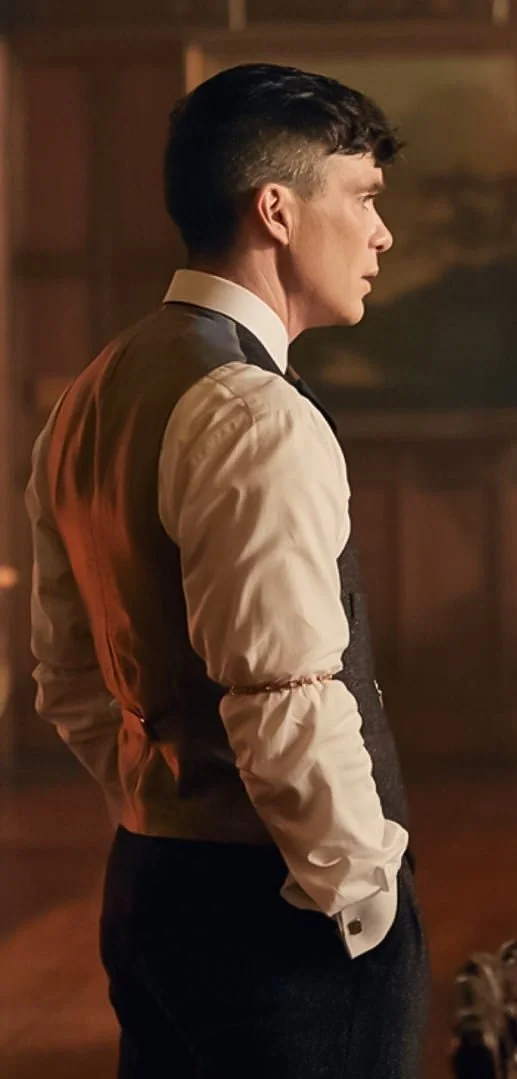

Waistband clip or belt adjustment clip/buttons
Three different ways of tightening the waistband of a pair of pants or a skirt. You're not going to get more than an inch or so tighter without weird bunching, and for most of these you'd want them to be hidden under a shirt or jacket, but they do the job if that's something you're having issues with.
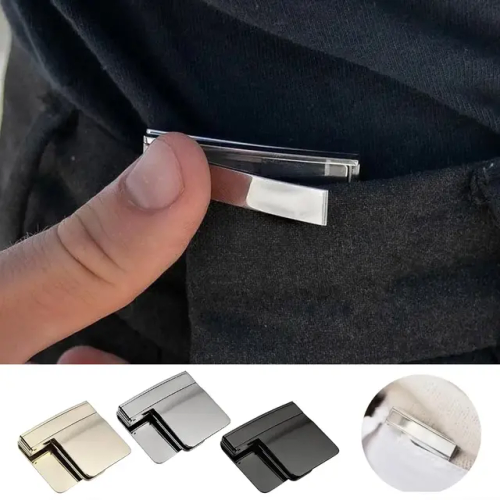


Collar pins: There are so many fun ones out there, both with and without chains. They're not terribly practical, though the slight weight may help keep your collar where you want it. Also consider collar tips, which pin (surprise) to the very tips of your collar points.


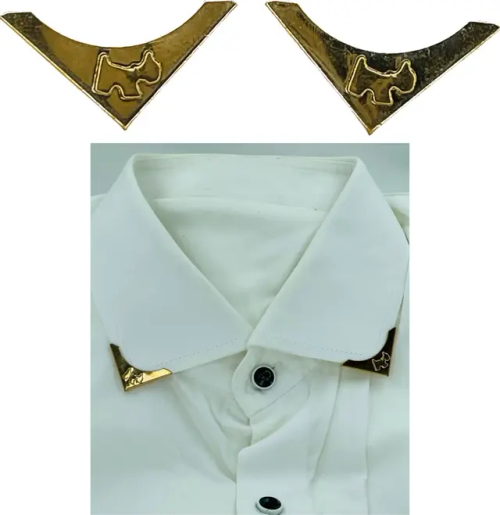
Sweater clips/guards: meant to hold your sweater or cardigan mostly closed. Great if your cardigan doesn't button, or if you don't like it to be buttoned all the way.
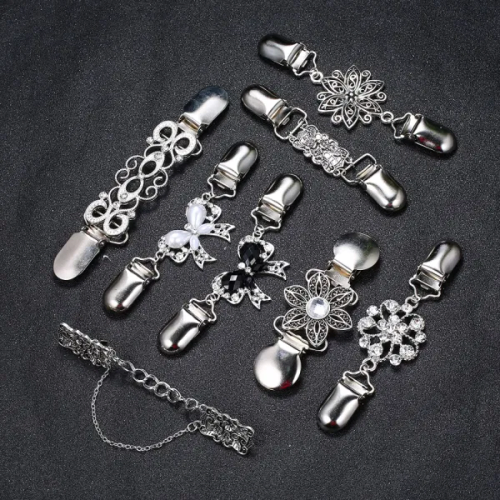
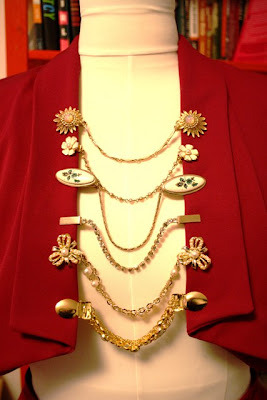
There's tons of other stuff out there like this--etsy is a great place to find this stuff. A lot of these are old solutions to the very modern problem of mass-maufactured clothes not being as one-size-fits-all as advertised, but they're also a fun way to put a bit of personality into businesswear.
Ok, I've seen this sentiment before, but the amount of Kindle Unlimited ads I've been seeing is forcing me to repeat it-
Kindle Unlimited is offering two free months of unlimited ebooks. As a trial. Which will then become a paid subscription.
Your local library is offering unlimited ebooks all the time. Forever. No contracts, no predatory practices, no tracking of how long you spend on each particular page in the hopes that information about your habits can be sold for a profit.
Use your library. They want so badly to give you all of the things for free.

-
 badidea9309 liked this · 1 week ago
badidea9309 liked this · 1 week ago -
 boo-dah-dood reblogged this · 1 week ago
boo-dah-dood reblogged this · 1 week ago -
 iinatixs liked this · 1 week ago
iinatixs liked this · 1 week ago -
 luzyoufool liked this · 1 week ago
luzyoufool liked this · 1 week ago -
 triplemj reblogged this · 1 week ago
triplemj reblogged this · 1 week ago -
 maximumfurycrusade reblogged this · 1 week ago
maximumfurycrusade reblogged this · 1 week ago -
 bonefaerie378 liked this · 1 week ago
bonefaerie378 liked this · 1 week ago -
 saccharineflaws liked this · 1 week ago
saccharineflaws liked this · 1 week ago -
 butterflybesos reblogged this · 1 week ago
butterflybesos reblogged this · 1 week ago -
 little-lost-little-soft reblogged this · 1 week ago
little-lost-little-soft reblogged this · 1 week ago -
 little-lost-little-soft liked this · 1 week ago
little-lost-little-soft liked this · 1 week ago -
 juicsicle reblogged this · 1 week ago
juicsicle reblogged this · 1 week ago -
 toastatater reblogged this · 1 week ago
toastatater reblogged this · 1 week ago -
 toastatater liked this · 1 week ago
toastatater liked this · 1 week ago -
 averygocrazery reblogged this · 1 week ago
averygocrazery reblogged this · 1 week ago -
 spacewavekitty reblogged this · 1 week ago
spacewavekitty reblogged this · 1 week ago -
 spacewavekitty liked this · 1 week ago
spacewavekitty liked this · 1 week ago -
 teafaellana liked this · 1 week ago
teafaellana liked this · 1 week ago -
 wiingdings reblogged this · 1 week ago
wiingdings reblogged this · 1 week ago -
 ssoft-boness liked this · 1 week ago
ssoft-boness liked this · 1 week ago -
 zibbyyss reblogged this · 1 week ago
zibbyyss reblogged this · 1 week ago -
 zibbyyss liked this · 1 week ago
zibbyyss liked this · 1 week ago -
 heres-to-the-new-us reblogged this · 1 week ago
heres-to-the-new-us reblogged this · 1 week ago -
 heres-to-the-new-us liked this · 1 week ago
heres-to-the-new-us liked this · 1 week ago -
 peachesingreece reblogged this · 1 week ago
peachesingreece reblogged this · 1 week ago -
 lilpixelpirate liked this · 1 week ago
lilpixelpirate liked this · 1 week ago -
 madnarvii reblogged this · 1 week ago
madnarvii reblogged this · 1 week ago -
 madnarvii liked this · 1 week ago
madnarvii liked this · 1 week ago -
 godyar liked this · 1 week ago
godyar liked this · 1 week ago -
 mocury-moto liked this · 1 week ago
mocury-moto liked this · 1 week ago -
 strixton reblogged this · 1 week ago
strixton reblogged this · 1 week ago -
 strixton liked this · 1 week ago
strixton liked this · 1 week ago -
 mostcertainlynotcis reblogged this · 1 week ago
mostcertainlynotcis reblogged this · 1 week ago -
 birdboy-blues reblogged this · 1 week ago
birdboy-blues reblogged this · 1 week ago -
 celeste-tyrrell reblogged this · 1 week ago
celeste-tyrrell reblogged this · 1 week ago -
 dimsumdolor liked this · 1 week ago
dimsumdolor liked this · 1 week ago -
 docflexula liked this · 2 weeks ago
docflexula liked this · 2 weeks ago -
 thelazydanish liked this · 2 weeks ago
thelazydanish liked this · 2 weeks ago -
 supergaysara reblogged this · 2 weeks ago
supergaysara reblogged this · 2 weeks ago -
 zeugmatador liked this · 2 weeks ago
zeugmatador liked this · 2 weeks ago -
 ithinkidrink reblogged this · 2 weeks ago
ithinkidrink reblogged this · 2 weeks ago -
 capondi reblogged this · 2 weeks ago
capondi reblogged this · 2 weeks ago -
 novastyx4 reblogged this · 2 weeks ago
novastyx4 reblogged this · 2 weeks ago -
 novastyx4 liked this · 2 weeks ago
novastyx4 liked this · 2 weeks ago -
 rosenrotthyla liked this · 2 weeks ago
rosenrotthyla liked this · 2 weeks ago -
 jeremytheangrygollum reblogged this · 2 weeks ago
jeremytheangrygollum reblogged this · 2 weeks ago -
 inowutimaboutsun liked this · 2 weeks ago
inowutimaboutsun liked this · 2 weeks ago



